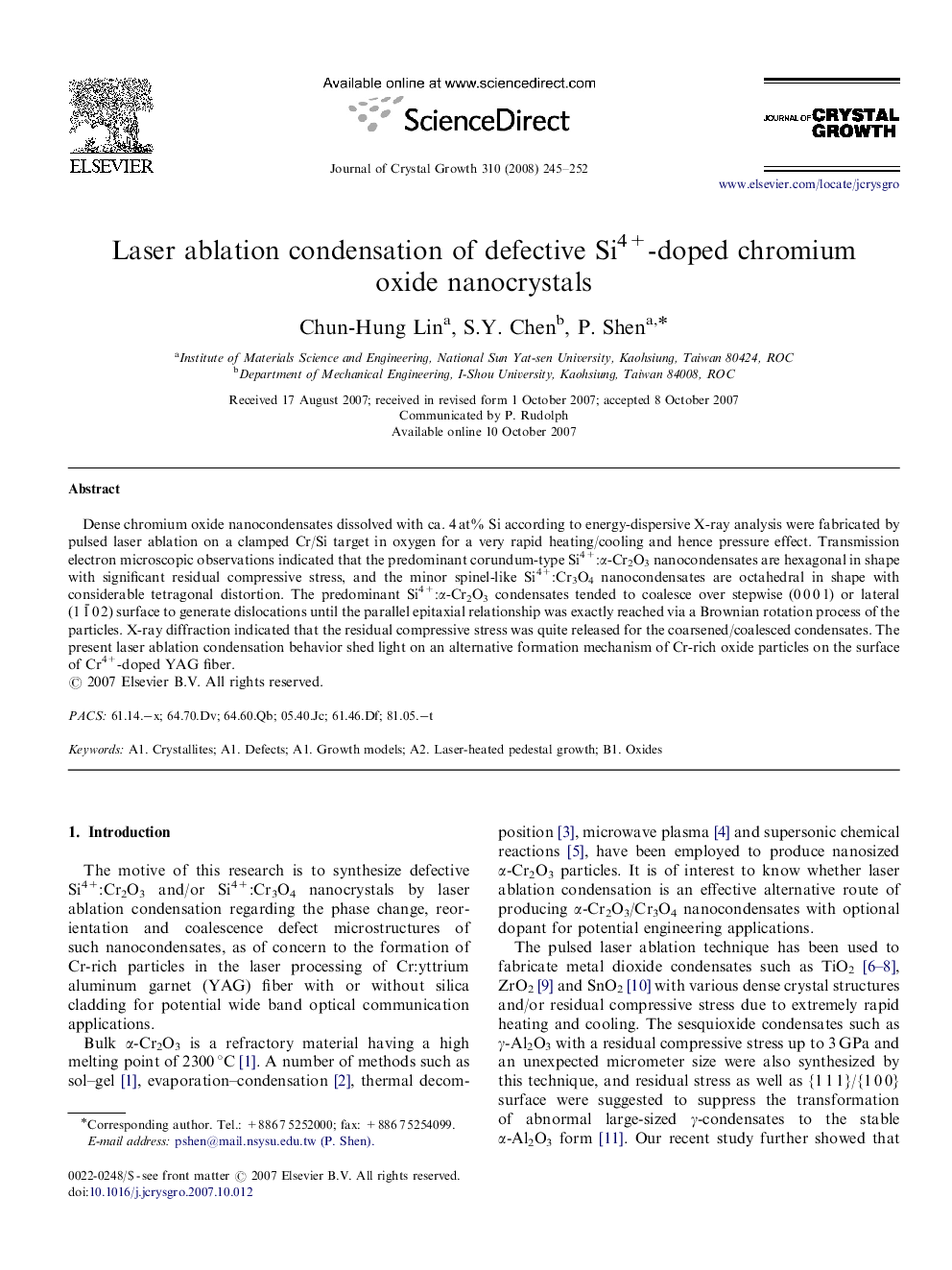| Article ID | Journal | Published Year | Pages | File Type |
|---|---|---|---|---|
| 1794566 | Journal of Crystal Growth | 2008 | 8 Pages |
Abstract
Dense chromium oxide nanocondensates dissolved with ca. 4 at% Si according to energy-dispersive X-ray analysis were fabricated by pulsed laser ablation on a clamped Cr/Si target in oxygen for a very rapid heating/cooling and hence pressure effect. Transmission electron microscopic observations indicated that the predominant corundum-type Si4+:α-Cr2O3 nanocondensates are hexagonal in shape with significant residual compressive stress, and the minor spinel-like Si4+:Cr3O4 nanocondensates are octahedral in shape with considerable tetragonal distortion. The predominant Si4+:α-Cr2O3 condensates tended to coalesce over stepwise (0 0 0 1) or lateral (11¯02) surface to generate dislocations until the parallel epitaxial relationship was exactly reached via a Brownian rotation process of the particles. X-ray diffraction indicated that the residual compressive stress was quite released for the coarsened/coalesced condensates. The present laser ablation condensation behavior shed light on an alternative formation mechanism of Cr-rich oxide particles on the surface of Cr4+-doped YAG fiber.
Keywords
Related Topics
Physical Sciences and Engineering
Physics and Astronomy
Condensed Matter Physics
Authors
Chun-Hung Lin, S.Y. Chen, P. Shen,
